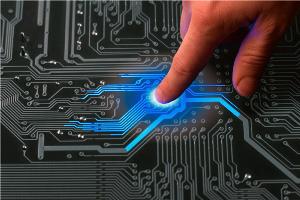Sep 30 2014
By exchanging specific atoms inside the mineral structure, quantum bits, required to process complex operations faster, could be stabilized.
Gustavo López Velázquez, researcher at the University of Guadalajara (UDG), proposes to construct a new quantum computer, able to perform multiple operations in a few seconds, which is based on the diamond structure to process information similarly to regular computers but with their own units of information called qubits that allow much faster data processing, equal to one thousand computers working simultaneously.

This type of computers can be employed by research institutes, the government or big business to solve differential problems and equations such as those used to design spacecraft that require specific calculations to determine the values of temperature and cosmic rays, as well as in the making of resonant cavities or guides for electromagnetic waves.
Besides, it creates a cryptographic system that transmits messages safely that can not be intercepted. For example, bank accounts or details of military operations, said Velázquez López, researcher at the University Center of Exact Sciences and Engineering.
The contribution of the UDG is to use the properties of the diamond to reduce interference and loss of qubits, generated by the interaction of the environment or electromechanical fields surrounding the qubit, when making multiple simultaneous arithmetic operations.
Since the problem of quantum computers lies in the instability of qubits, which if not remaing in both positions of zero and one are simultaneously destroyed, unlike classical computing where bits work in a binary system which can only choose one option.
What matters in a quantum computer is to perform operations simultaneously in all states of the system. If you have a thousand qubits, the number of states zero and 1 grow exponentially. Mil qubits is a number that is considered reasonable for serious and complex calculations in this type of computer, Lopez Velazquez said.
The molecular structure of diamond is formed by carbon atoms 12 and 13, which are chemically identical. However, only the 13 atom generates a nuclear magnetic field having the ability to control a qubit to keep zero and 1 in the state at the same time.
Coal 13 alone defines a qubit in both positions, in the system of diamond, so to have a computer of thousand qubits it will be needed to exchange 13 thousand carbon atoms, explained the expert in physics.
Currently there are prototypes of quantum computers with many qubits based on trapped ions, nuclear magnetic resonance or quantum dots, but the professor believes the new diamond system could achieve a quantum computer of a thousand qubits, much more stable in the future.